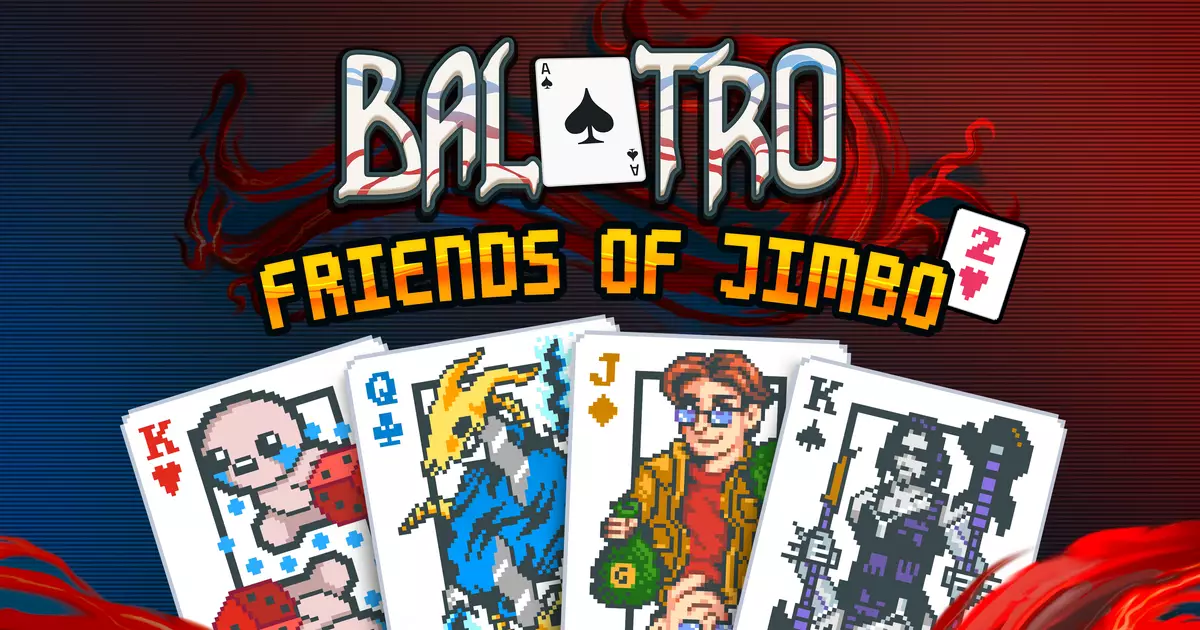Balatro is a game that invites players into a finely crafted world of strategy and gameplay mechanics that appear deceptively enticing. At first, it feels rewarding to engage with its unique systems, but my experience revealed a more complex reality beneath the surface. After dedicating an hour to exploring its features, I found myself both charmed and wary—eventually opting to uninstall the game. A common struggle for gamers, Balatro seems to dangle the promise of immense satisfaction, yet it also hints at deeper hooks that can lead to an excessive, time-consuming commitment. For many, the allure may prove irresistible; however, for those of us with a keen eye for potential pitfalls, it remains essential to tread carefully.
Recently, Balatro released a new update, adding a fresh layer of themed card art inspired by popular games such as *Binding of Isaac*, *Cyberpunk 2077*, *Stardew Valley*, and *Slay The Spire*. It’s intriguing to see such beloved franchises represented, yet it begs the question: do these aesthetic changes truly enhance the gaming experience? Ultimately, these adjustments are cosmetic, providing no new content or gameplay mechanics. Players are given the option to toggle between the original and the new card art through an in-game menu designed for customization—an improvement, but one that raises the stakes of superficial engagement rather than substantive enhancement.
Interestingly, this update follows the launch of the first “Friends Of Jimbo” update back in August, which similarly included themed art referencing titles like *The Witcher 3* and *Among Us*. These updates feed into a pattern often observed in games aiming to keep players returning: they exploit nostalgia and cultural familiarity to draw players back in. While this strategy can successfully re-engage a player base, it can also lead to an endless cycle of anticipation for new content that, while visually appealing, ultimately lacks meaningful impact on gameplay.
This brings to mind the thoughts of fellow gaming reviewer Katharine, who praised Balatro for its mechanics that encourage players to overcome challenges and relish the thrill of successful gameplay. Balatro’s design allows players to revel in the satisfaction of “making numbers go up” at an exhilarating pace. However, the underlying message of challenge versus reward can easily morph into an obsession, where players feel compelled to continue engaging with a system that does not fundamentally change. As they delve deeper, the experience shifts from delight to a battle against the game itself, creating an unhealthy compulsion to keep playing.
With its beautiful yet entrapment-focused design, Balatro serves as a testament to the delicate balance between engaging gameplay and addictive tendencies. While Katharine’s enthusiasms resonated with some players, I remain cautious. The reality is, despite the charm and allure, it is essential to listen to that inner voice warning against the seductive pull of a well-designed trap. I left Balatro behind after a brief encounter, wary of the potential for long-term engagement that may not yield genuine satisfaction. For those who remain enthralled, it’s crucial to assess whether the joy of mastery outweighs the risks of a deeper obsession. Enjoyment in gaming should always come with a sense of freedom, not obligation.

